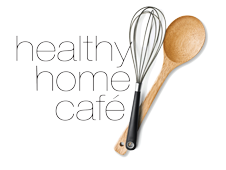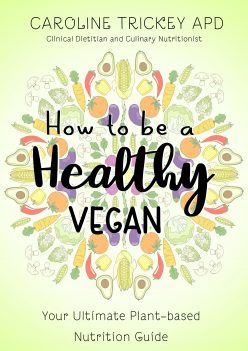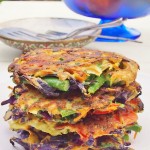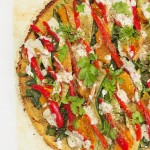Dr. Jon Robison
The latest round of sugar bashing probably traces its origin back to an article by the lawyer (not nutritionist) Jon Banzhaf in the “New Scientist” in 2003 in which he argued that “fats and sugars can act on the brain in the same way as nicotine and heroin.” In a piece in “The New York Times” in 2011, Dr. Robert Lustig summed up the gathering storm against the sweet tasting white powder saying:
“Sugar is not just an empty calorie…It’s not about calories.
It has nothing to do with calories. It’s a poison by itself.”
Of course the sugar as “empty calorie” concept makes no sense at all. A calorie is a measure of energy, and carbohydrates (including sugar) are nutrients – sugar provides both. But that aside, the supposed horrors of sugar have certainly become legendary. Its damaging effects have been compared to those of another white powder, and an entire industry – non-sugar sweeteners – has grown up around the fear produced by the legend. Experts regularly claim that “most Americans are addicted to sugar.”
On a recent LinkedIn post, another provocateur warned that “sugar is three times more addictive than cocaine.” The internet lit up recently after a study involving rats who were fed Oreo cookies claimed that sugar was “8 times more addictive than cocaine.” And bookstore shelves are overflowing with titles like: “Beat Sugar Addiction Now,” “Break Out of The Sugar Prison,” “The Sugar Addict’s Total Recovery Program,” “How To Break Your Sugar Addiction Today,” “Little Sugar Addicts,” “ Suicide By Sugar,” and my personal favorite, “Lick The Sugar Habit.”
Even more unfortunately, a number of self-proclaimed food experts are stuck in the food addiction (FA) paradigm, resulting in outrageous recommendations to an already confused and anxious population.
In his book, “The End of Overeating: Taking Control of the Insatiable American Appetite,” physician and former Food and Drug Administration Commissioner David Kessler, focuses on the alleged addictive qualities of highly palatable (sugary and/or fatty) foods. He claims that the only way to deal with these foods is to banish them. He suggests:
“The enduring ability to eat differently depends on coming to view these foods as enemies, not friends.”1
The solution according to Kessler is to retrain the brain to think:
“I’ll hate myself if I eat that.”
Eating disorder experts know only too well that, far from moving us towards that End Of Overeating, this approach is one that has led, and will continue to lead, to exactly the opposite – more confusion, more anxiety, more shame, and more overeating. And amazingly, Kessler seems to agree as he completely contradicts himself some pages earlier in the book saying:
“The loss of control that characterizes conditioned hypereating is magnified by diets that leave us feeling deprived.”2
So, Kessler advocates for restriction and deprivation to treat overeating while saying that doing exactly that is why the overeating became such a problem in the first place. Could it get any more confusing?
Food Addiction – The Rhetoric – Common Pathways
So, what is it about this wonderful tasting stuff that inspires such trepidation? Well, the argument by the naysayers goes something like this:
When people ingest sugar, it lights up the same nerve pathways in the brain that get lit up when people take cocaine. Therefore sugar must be addictive – just like cocaine.
The effect of virtually all drugs of abuse is largely dependent on activation of the body’s reward circuit or pleasure center – the mesolimbic dopamine system. These drugs exert their influence primarily by increasing the release of the neurotransmitter dopamine, which makes us feel good.
So, what about sugar? It is undeniably true that eating sugary foods increases the release of dopamine through these pathways and makes us feel good. Does this mean we are addicted to sugar?
Although it is certainly more titillating to conclude the answer is yes, in this case it turns out that the more truthful answer to the question is a much more boring, not really. Because in fact, the list of things that light up these dopaminergic pathways does not stop at drugs of abuse and highly palatable foods. Here is a partial list of other things that light up these pathways:
- Music
- Humor
- Winning a prize
- Expecting to win a prize
- A mother recognizing her child
- Attractive faces
- Smiling faces
Oh yes – and being in love!
Are we to fear a pathological undercurrent for the enjoyment of all of these and perhaps limit or even eliminate them from our lives just because they light up our pleasure pathways?
Writing in 2010 in a review article in “The Journal of Clinical Nutrition,” Dr. David Benton, professor of psychology at the University of Swansea, Wales summed up the reality this way:
“That such a wide range of pleasant phenomena activate these mechanisms suggests that rather than seeing the stimulation of these pathways as something unusual or worrying, it can be viewed as one of a wide range of positive experiences that routinely stimulate a common circuitry.”3
Interestingly, a closer look at the details unearths other discrepancies in the comparison between sugar and drugs of abuse when it comes to mechanisms of action. In fact, although these substances all do share some common pathways, sugar actually influences different populations of nerves in the brain, causes different patterns of firing, and induces different timings of the release of dopamine. As Benton explains:
“Reward response is highly dependent on the substances tested, demonstrating that multiple reward mechanisms operate that can encode for different stimuli.”
Again, contrary to the hype, in a recent consensus paper, an esteemed group of European scientists came to a similar conclusion saying:
“With respect to the rewarding property of foods, there is overlap with neuronal pathways involved in substance use disorders. However, this overlap in itself does not validate the concept of food addiction.”
Food Addiction – The Reality – Binge Eating Disorder
Perhaps the most damning repudiation of the FA hypothesis – (hypothesis after all, because suggestive information from studies involving rats eating Oreo cookies is hardly conclusive proof of anything involving humans) – comes from work that has been accumulating related to Binge Eating Disorder (BED). BED is the most common of all eating disorders, affecting some 3.5% of women and 2.0% of men in the United States. It is defined this way by the Binge Eating Disorder Association:
“Also called compulsive eating, emotional eating or overeating, binge eating disorder is characterized by recurring episodes of binge eating, feeling out of control while bingeing, and feeling guilt and shame afterward.’
Proponents of the FA hypothesis often cite BED as conclusive evidence of the addictive nature of foods – particularly highly palatable ones that contain substantial amounts of fat, and of course, sugar.
Here is the problem – if these foods, including sugar, are addictive in a manner homologous to cocaine and other drugs of abuse, the appropriate treatment to cure the “addiction” ought to follow an addiction model (below) based on abstinence, and similar to that which is used to treat addiction to drugs of abuse like cocaine.
Addiction Model (applied to food)
- Dietary restraint
- Food avoidance
- Good foods / bad foods
But in fact, by far the most effective treatment for the out of control overeating that is the defining hallmark of BED is quite the opposite, as represented below:
Cognitive Behavior Therapy (best treatment for BED)
- Decreased dieting
- Flexible eating
- All foods fit
That’s right… people who binge on specific foods learn to incorporate those foods safely and effectively into their eating regimens. Can you imagine treating cocaine addiction with this model – through moderate, restricted use? Of course not! But the research on the treatment of BED is quite conclusive, as one intuitive eating expert put it:
“Multiple studies have examined the results of binge eaters consuming their forbidden foods as part of treatment. While food addiction theory would predict an increase in binge eating behavior with exposure to these foods, the opposite occurred as people experienced a decrease in binge eating in all of the studies.”4
Sugar Addiction: Take Home
Too much of almost anything can cause problems. Ingesting too much oxygen or water can be fatal – too much of any food, even broccoli – can be problematic. And you can certainly manipulate a rat’s food to make them eat more of it than they might under normal conditions.
But cravings for foods in humans are not the same as cravings in rats. Even experts who claim that FA produces tolerance (a critical marker for addiction) in rats in a manner similar to addiction to drugs of abuse admit that:
While clearly some people do binge on certain foods, to my knowledge there is no evidence to suggest that a rat pup was ever shamed into eating less (and therefore likely binging when mom isn’t around) by a rat mom who suggested that otherwise it would all go to the pup’s thighs.
Eating disorder experts have known for years that the relationship between humans and their food is an extremely complex phenomenon involving much more than the sharing of a few metabolic pathways.
So, can a person eat more of a particular food than might be healthy for them? Of course! Can particular foods be problematic for certain people? Of course! But, since it is clear that the most effective treatment for this kind of overeating involves the incorporation of the “problem foods” into a healthy overall healthy eating regimen, the continued pushing of the FA hypothesis is, at best premature, and at worst, likely to lead to increases rather than decreases in problem eating.5-7
We in the health professions (and lawyers as well, evidently) seem to be constantly in need of pathologizing some food or another. Unfortunately the evidence does not support that scaring people about what they eat is an effective behavior change tool.
If you are concerned about your relationship with a particular food or food in general, consider seeing a nutrition professional, preferably one who is experienced at helping people with disordered eating and/or eating disorders.
References:
1. Kessler, D.A., The End of Overeating: Taking Control of the Insatiable American Appetite. Rodale Books, New York, 2009. (p.234)
2. Kessler, D.A., The End of Overeating: Taking Control of the Insatiable American Appetite. Rodale Books, New York, 2009. (p. 206)
3. Benton, Plausibility of sugar addiction & its role in obesity & eating disorders. ClinNutr 2009
4. Tribole, E. & Resch, E. Intuitive Eating, 2012, p.93
5. Wilson, G.T., Eating Disorders, Obesity and Addiction, Eur. Eat. Disorders Rev.18(2010):341-351
6. Ziauddeen, H., Fletcher, P.C., Is food addiction a valid and useful concept? Obesity Reviews 14. January 2013:19-28.
7. Ziauddeen,H., Farooqi, Fletcher. Obesity and the brain: How convincing is the addiction model? Nature reviews/Neuroscience. 13 April 2012:270-286.












